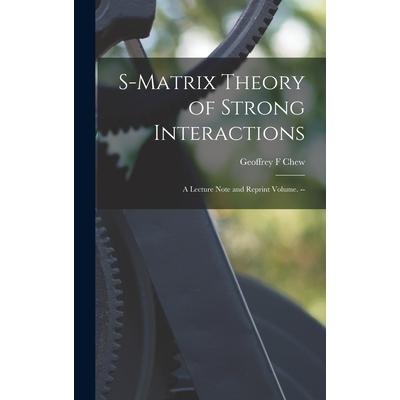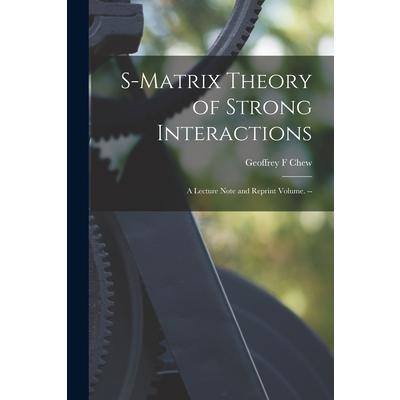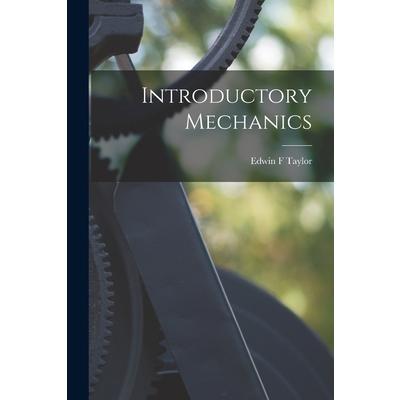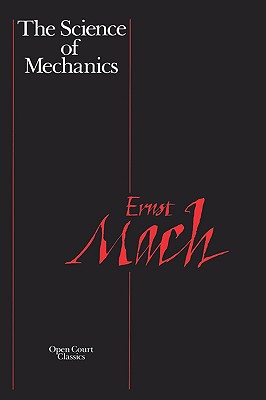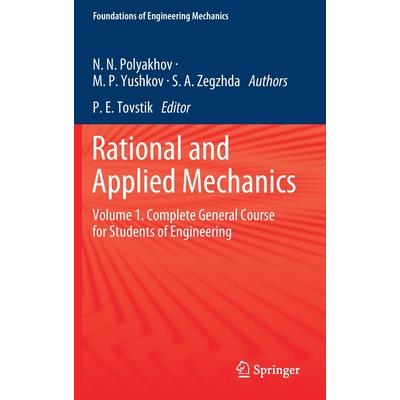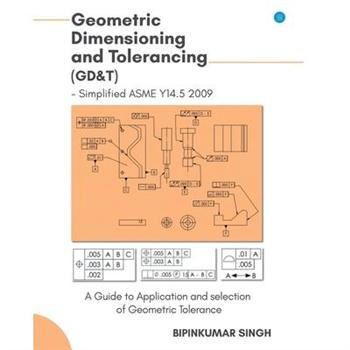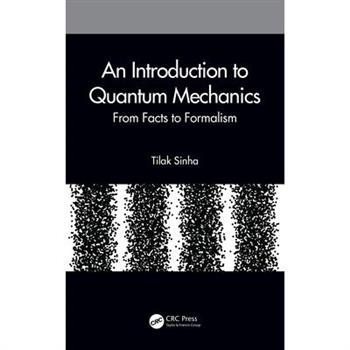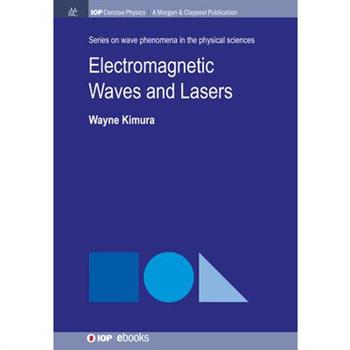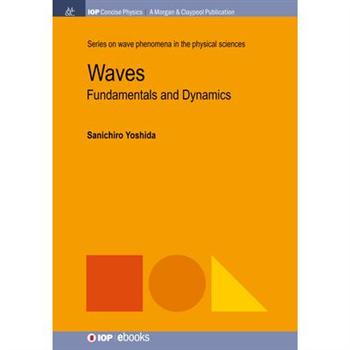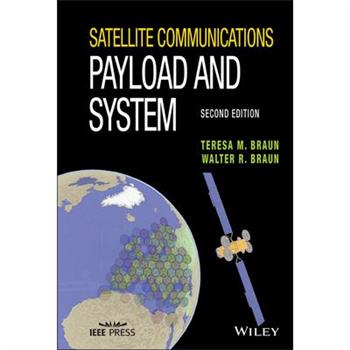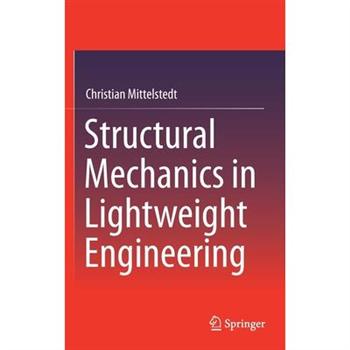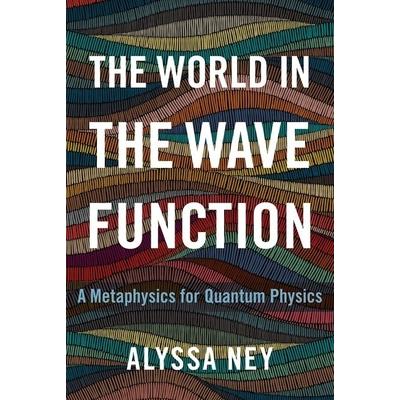A Project-Based Introduction to Computational Statics
This book uses a novel concept to teach the finite element method, applying it to solid mechanics. This major conceptual shift takes away lengthy theoretical derivations in the face-to-face interactions with students and focuses on the summary of key equations and concepts; and to practice these on well-chosen example problems. For this new, 2nd edition, many examples and design modifications have been added, so that the learning-by-doing features of this book make it easier to understand the concepts and put them into practice. The theoretical derivations are provided as additional reading and students must study and review the derivations in a self-study approach. The book provides the theoretical foundations to solve a comprehensive design project in tensile testing. A classical clip-on extensometer serves as the demonstrator on which to apply the provided concepts. The major goal is to derive the calibration curve based on different approaches, i.e., analytical mechanics and based on the finite element method, and to consider further design questions such as technical drawings, manufacturing, and cost assessment. Working with two concepts, i.e., analytical and computational mechanics strengthens the vertical integration of knowledge and allows the student to compare and understand the different concepts, as well as highlighting the essential need for benchmarking any numerical result.
The Motions and Interactions of Bodies; Readings, Notes, and Queries
This work has been selected by scholars as being culturally important and is part of the knowledge base of civilization as we know it.This work is in the public domain in the United States of America, and possibly other nations. Within the United States, you may freely copy and distribute this work, as no entity (individual or corporate) has a copyright on the body of the work.Scholars believe, and we concur, that this work is important enough to be preserved, reproduced, and made generally available to the public. To ensure a quality reading experience, this work has been proofread and republished using a format that seamlessly blends the original graphical elements with text in an easy-to-read typeface.We appreciate your support of the preservation process, and thank you for being an important part of keeping this knowledge alive and relevant.
Report on the Utilization of Peat Fuel for the Production of Power [microform]
This work has been selected by scholars as being culturally important and is part of the knowledge base of civilization as we know it.This work is in the public domain in the United States of America, and possibly other nations. Within the United States, you may freely copy and distribute this work, as no entity (individual or corporate) has a copyright on the body of the work.Scholars believe, and we concur, that this work is important enough to be preserved, reproduced, and made generally available to the public. To ensure a quality reading experience, this work has been proofread and republished using a format that seamlessly blends the original graphical elements with text in an easy-to-read typeface.We appreciate your support of the preservation process, and thank you for being an important part of keeping this knowledge alive and relevant.
The Mechanics’ Lien Acts of Ontario (R.S.O. (1897); Cap. 153), Manitoba (60 Victoria, Man., Cap. 29), and British Columbia (R.S., Cap. 132) [microform]
This work has been selected by scholars as being culturally important and is part of the knowledge base of civilization as we know it.This work is in the public domain in the United States of America, and possibly other nations. Within the United States, you may freely copy and distribute this work, as no entity (individual or corporate) has a copyright on the body of the work.Scholars believe, and we concur, that this work is important enough to be preserved, reproduced, and made generally available to the public. To ensure a quality reading experience, this work has been proofread and republished using a format that seamlessly blends the original graphical elements with text in an easy-to-read typeface.We appreciate your support of the preservation process, and thank you for being an important part of keeping this knowledge alive and relevant.
The Motions and Interactions of Bodies; Readings, Notes, and Queries
This work has been selected by scholars as being culturally important and is part of the knowledge base of civilization as we know it.This work is in the public domain in the United States of America, and possibly other nations. Within the United States, you may freely copy and distribute this work, as no entity (individual or corporate) has a copyright on the body of the work.Scholars believe, and we concur, that this work is important enough to be preserved, reproduced, and made generally available to the public. To ensure a quality reading experience, this work has been proofread and republished using a format that seamlessly blends the original graphical elements with text in an easy-to-read typeface.We appreciate your support of the preservation process, and thank you for being an important part of keeping this knowledge alive and relevant.
M矇todo dos elementos de contorno
O m矇todo dos elementos de contorno (MEC) cresceu de forma consider獺vel nos 繳ltimos anos, por矇m seu conte繳do destina-se em grande n繳mero aos cursos de p籀s-gradua癟瓊o, e por conta disso, existem poucos livros voltados aos cursos de gradua癟瓊o nas 獺reas da engenharia e ci礙ncias.Dessa forma, o presente livro apresenta uma maneira de tornar o m矇todo dos elementos de contorno (MEC) amig獺vel atrav矇s de conceitos vistos ao longo do curso de gradua癟瓊o. A formula癟瓊o presente no livro 矇 voltada para problemas de transfer礙ncia de calor.
The Mechanics’ Lien Acts of Ontario (R.S.O. (1897); Cap. 153), Manitoba (60 Victoria, Man., Cap. 29), and British Columbia (R.S., Cap. 132) [microform]
This work has been selected by scholars as being culturally important and is part of the knowledge base of civilization as we know it.This work is in the public domain in the United States of America, and possibly other nations. Within the United States, you may freely copy and distribute this work, as no entity (individual or corporate) has a copyright on the body of the work.Scholars believe, and we concur, that this work is important enough to be preserved, reproduced, and made generally available to the public. To ensure a quality reading experience, this work has been proofread and republished using a format that seamlessly blends the original graphical elements with text in an easy-to-read typeface.We appreciate your support of the preservation process, and thank you for being an important part of keeping this knowledge alive and relevant.
Field measurement and identification of solid materials
The emergence of optical dimensional methods has brought new approaches and new perspectives in experimental solid mechanics. These measurement systems are very different from the classical systems such as strain gauges, extensometers and displacement sensors. The classical systems measure local information, are in direct contact with the structure but benefit from a standardization which allows them to be favoured by the industry. Systems based on optical methods, and in particular by stereo-correlation of digital images, the grid method, the image correlation method, interferometry, the infrared method and the thermographic method offer field measurements, without contact with the structure. In fact, these techniques allow access to three-dimensional displacements and deformations at any point on the surface of the structure being evaluated. These new means of measurement, due to the great wealth of information (qualitative and quantitative aspects) that they provide, renew many aspects of experimental mechanics and are favoured by researchers to complete.
Principles and Applications of Wavelet Transform
Significant applications of wavelet transforms in geoscience and biology have been elucidated in this book. Wavelet transforms are one of the most primary candidates in time-frequency transformations. These include application of wavelet transforms in the treatment of EEG signals, biometric recognition and validation, and dimensionality reduction of the gait identification framework. It also elucidates the applications of wavelet transforms in the study of data gathered from sports and breast cancer. The denoting process has been evaluated within the domain of wavelet transform and applied on data garnered from real world applications.
Oscillation and Waves: Fundamental Concepts in Physics
The repetitive variation in time of a motion from one place to another or towards equilibrium point is known as an oscillation. Mechanical oscillations are called vibrations and other forms of oscillations are pendulum and alternating current power. The different types of oscillators are harmonic oscillators and anti-vibration compound. When oscillations travel via mass or space carrying or transferring energy they are known as waves. This book unfolds the innovative aspects of oscillation and waves, which will be crucial for the holistic understanding of the subject matter. The topics included in it are of utmost significance and bound to provide incredible insights to readers. The textbook aims to serve as a resource guide for students and experts alike and contribute to the growth of the discipline.
Vibrations: Analysis and Control Mechanism
The analysis and control mechanism of vibrations are elucidated in this extensive book. Vibration is a phenomenon that we can notice in various systems since its impact can vary vastly from the personal discomfort generated from the unevenness of a road to the downfall of a building or a bridge at the time of earthquake. This book is an abridgement of research works on vibration examination and control. It reflects on new techniques that help us understand and mitigate this phenomenon. This book deals with novel developments on vibration analysis and comprises of a series of case studies that illustrate new approaches on vibration control. The applications differ and include areas like vehicle suspension systems, wind turbines and civil engineering structures.
Applied Theories of Wave Propagation
This book discusses the applied theories of wave propagation in a comprehensive manner. A wave is one of the most fundamental physics phenomena discovered by humans since ancient times. The wave is also one of the most-studied phenomena in physics which can be well elucidated by mathematics. Such studies can be the best explanation of the "science" of wave propagation, summarizing the laws of nature by employing human defined symbols, languages and operators. An in-depth understanding of waves and wave propagation can assist us in enhancement of the quality of life and guide us into a direction for future explorations of the universe and nature. The book elucidates appealing theories and applications for readers interested in studying about waves and wave propagations. It also acts as a reference for experts working in the fields described in this book.
Science and Engineering of Small Arms
This book initiates with the story of the evolution of firearms to enable the reader to appreciate the sequence of the development of firearms. It discusses different classes of small arms, their mechanics, internal and external ballistics. Further, it covers the design idea of barrels and actions, various operating principles and relevant discussion on ammunition and propellants. The principle of quality in the design of the small arms is also elaborated in the desired degree. The book brings out the relevance of modern manufacturing technologies like MIM and various surface treatments, and polymers for enhancement of product quality. To appreciate the sophistication of the architecture, the book presents the anatomical details of a few small arms of reputes. Provides complete understanding of overall small weapon systems                                                                                                                    Explores mechanics and physics of small arms                                                                                                              Discusses proper design, quality control, and manufacturing process selections for a good weapon               Covers common type of weapon failures and catastrophic failure                                                                                                                        Includes relevance of manufacturing processes      z
Science and Engineering of Small Arms
This book initiates with the story of the evolution of firearms to enable the reader to appreciate the sequence of the development of firearms. It discusses different classes of small arms, their mechanics, internal and external ballistics. Further, it covers the design idea of barrels and actions, various operating principles and relevant discussion on ammunition and propellants. The principle of quality in the design of the small arms is also elaborated in the desired degree. The book brings out the relevance of modern manufacturing technologies like MIM and various surface treatments, and polymers for enhancement of product quality. To appreciate the sophistication of the architecture, the book presents the anatomical details of a few small arms of reputes. Provides complete understanding of overall small weapon systems                                                                                                                    Explores mechanics and physics of small arms                                                                                                              Discusses proper design, quality control, and manufacturing process selections for a good weapon               Covers common type of weapon failures and catastrophic failure                                                                                                                        Includes relevance of manufacturing processes      z
Introduction to Classical Mechanics
Classical mechanics deals with the motion of macroscopic objects such as projectiles, parts of machinery as well as the astronomical objects including planets, stars, spacecrafts, etc. Newton's three laws of motion form the basis of classical mechanics. Some of the other forces studied within this field are Lorentz force for electromagnetism and gravitational force. It is broadly classified into three main branches such as statics, dynamics and kinematics. It can also be divided on the basis of the region of its application such as celestial mechanics, relativistic mechanics, statistical mechanics and continuum mechanics. Classical mechanics assumes that matter and energy have definite attributes, such as location, in speed and space. This book provides comprehensive insights into the field of classical mechanics. Some of the diverse topics covered herein address the varied branches that fall under this category. The extensive content of this book provides the readers with a thorough understanding of the subject.
Methodes de Maintenance Et Surete de Fonctionnement
Les m矇thodes de maintenance appliqu矇es dans divers secteurs gagnent de plus en plus d'int矇r礙t en situation d'indisponibilit矇 d'un 矇quipement. La rapidit矇 avec laquelle cet 矇quipement est remise en service d矇pend de l'efficacit矇 de ces m矇thodes, et conditionne de mani癡re significative la disponibilit矇 et par voie de cons矇quence la productivit矇 et le co羶t de maintenance engendr矇. Ces m矇thodes de maintenance sont d'autant plus efficaces quand elles g癡rent et coordonnent toutes les activit矇s li矇es ? la fois ? la production et ? la maintenance, dans le cadre d'une politique de maintenance adapt矇e aux exigences de l'industrie, en tenant compte de ses diverses contraintes (techniques et 矇conomiques) et des objectifs de production (co羶t, qualit矇, d矇lai).L'id矇e de ce livre est de faire le point sur ces m矇thodes, d'en rechercher l'efficacit矇 et de permettre aux ing矇nieurs et aux techniciens de maintenance de mieux appr矇hender ces probl癡mes.Ce manuscrit sera 矇galement une aide aux 矇tudiants pour pr矇parer leurs examens via de nombreuses applications corrig矇es.
Ultrahigh Vacuum and Its Applications
This work has been selected by scholars as being culturally important and is part of the knowledge base of civilization as we know it.This work is in the public domain in the United States of America, and possibly other nations. Within the United States, you may freely copy and distribute this work, as no entity (individual or corporate) has a copyright on the body of the work.Scholars believe, and we concur, that this work is important enough to be preserved, reproduced, and made generally available to the public. To ensure a quality reading experience, this work has been proofread and republished using a format that seamlessly blends the original graphical elements with text in an easy-to-read typeface.We appreciate your support of the preservation process, and thank you for being an important part of keeping this knowledge alive and relevant.
Supplement to High School Physical Science [microform]
This work has been selected by scholars as being culturally important and is part of the knowledge base of civilization as we know it.This work is in the public domain in the United States of America, and possibly other nations. Within the United States, you may freely copy and distribute this work, as no entity (individual or corporate) has a copyright on the body of the work.Scholars believe, and we concur, that this work is important enough to be preserved, reproduced, and made generally available to the public. To ensure a quality reading experience, this work has been proofread and republished using a format that seamlessly blends the original graphical elements with text in an easy-to-read typeface.We appreciate your support of the preservation process, and thank you for being an important part of keeping this knowledge alive and relevant.
Pressure Measurement in Vacuum Systems
This work has been selected by scholars as being culturally important and is part of the knowledge base of civilization as we know it.This work is in the public domain in the United States of America, and possibly other nations. Within the United States, you may freely copy and distribute this work, as no entity (individual or corporate) has a copyright on the body of the work.Scholars believe, and we concur, that this work is important enough to be preserved, reproduced, and made generally available to the public. To ensure a quality reading experience, this work has been proofread and republished using a format that seamlessly blends the original graphical elements with text in an easy-to-read typeface.We appreciate your support of the preservation process, and thank you for being an important part of keeping this knowledge alive and relevant.
Phase Behavior of Two-Dimensional Water Confined in Graphene Nanocapillaries
In this book, the authors use molecular dynamics simulations to conduct a comprehensive study of the compression/superheating limit and phase transition of 2D (monolayer, bilayer, and trilayer) water/ice constrained in graphene nanocapillaries. When subjected to nanoscale confinement and under ultrahigh pressure, water and ice behave quite differently than their bulk counterparts, partly because the van der Waals pressure can spark a water-to-ice transformation, known as the metastability limit of two-dimensional (2D) liquids. From a mechanical standpoint, this liquid-to-solid transformation characterizes the compression limit (or metastability limit) of 2D water. The findings presented here could help us to better understand the phase behavior of 2D confined water/ice.
Syllabus of Elementary Mechanics [microform]
This work has been selected by scholars as being culturally important and is part of the knowledge base of civilization as we know it.This work is in the public domain in the United States of America, and possibly other nations. Within the United States, you may freely copy and distribute this work, as no entity (individual or corporate) has a copyright on the body of the work.Scholars believe, and we concur, that this work is important enough to be preserved, reproduced, and made generally available to the public. To ensure a quality reading experience, this work has been proofread and republished using a format that seamlessly blends the original graphical elements with text in an easy-to-read typeface.We appreciate your support of the preservation process, and thank you for being an important part of keeping this knowledge alive and relevant.
760 Mouvements m矇caniques
For inventors, hobbyists and all those who love mechanics, this book presents a comprehensible and comprehensive dictionary-like collection of kinematic combinations.Nearly eight hundred mechanisms are thus described and represented by a very clear diagram accompanied by a legend.
S-matrix Theory of Strong Interactions; a Lecture Note and Reprint Volume. --
This work has been selected by scholars as being culturally important and is part of the knowledge base of civilization as we know it.This work is in the public domain in the United States of America, and possibly other nations. Within the United States, you may freely copy and distribute this work, as no entity (individual or corporate) has a copyright on the body of the work.Scholars believe, and we concur, that this work is important enough to be preserved, reproduced, and made generally available to the public. To ensure a quality reading experience, this work has been proofread and republished using a format that seamlessly blends the original graphical elements with text in an easy-to-read typeface.We appreciate your support of the preservation process, and thank you for being an important part of keeping this knowledge alive and relevant.
Ultrahigh Vacuum and Its Applications
This work has been selected by scholars as being culturally important and is part of the knowledge base of civilization as we know it.This work is in the public domain in the United States of America, and possibly other nations. Within the United States, you may freely copy and distribute this work, as no entity (individual or corporate) has a copyright on the body of the work.Scholars believe, and we concur, that this work is important enough to be preserved, reproduced, and made generally available to the public. To ensure a quality reading experience, this work has been proofread and republished using a format that seamlessly blends the original graphical elements with text in an easy-to-read typeface.We appreciate your support of the preservation process, and thank you for being an important part of keeping this knowledge alive and relevant.
S-matrix Theory of Strong Interactions; a Lecture Note and Reprint Volume. --
This work has been selected by scholars as being culturally important and is part of the knowledge base of civilization as we know it.This work is in the public domain in the United States of America, and possibly other nations. Within the United States, you may freely copy and distribute this work, as no entity (individual or corporate) has a copyright on the body of the work.Scholars believe, and we concur, that this work is important enough to be preserved, reproduced, and made generally available to the public. To ensure a quality reading experience, this work has been proofread and republished using a format that seamlessly blends the original graphical elements with text in an easy-to-read typeface.We appreciate your support of the preservation process, and thank you for being an important part of keeping this knowledge alive and relevant.
Introductory Mechanics
This work has been selected by scholars as being culturally important and is part of the knowledge base of civilization as we know it.This work is in the public domain in the United States of America, and possibly other nations. Within the United States, you may freely copy and distribute this work, as no entity (individual or corporate) has a copyright on the body of the work.Scholars believe, and we concur, that this work is important enough to be preserved, reproduced, and made generally available to the public. To ensure a quality reading experience, this work has been proofread and republished using a format that seamlessly blends the original graphical elements with text in an easy-to-read typeface.We appreciate your support of the preservation process, and thank you for being an important part of keeping this knowledge alive and relevant.
Introductory Mechanics
This work has been selected by scholars as being culturally important and is part of the knowledge base of civilization as we know it.This work is in the public domain in the United States of America, and possibly other nations. Within the United States, you may freely copy and distribute this work, as no entity (individual or corporate) has a copyright on the body of the work.Scholars believe, and we concur, that this work is important enough to be preserved, reproduced, and made generally available to the public. To ensure a quality reading experience, this work has been proofread and republished using a format that seamlessly blends the original graphical elements with text in an easy-to-read typeface.We appreciate your support of the preservation process, and thank you for being an important part of keeping this knowledge alive and relevant.
Quantum Mechanics
This book covers the entire span of quantum mechanics whose developments have taken place during the early part of the twentieth century up till the present day. We start with the Rutherford-Bohr model of the atom followed by Schrodinger's wave mechanics with its application to the solution of calculating the energy spectrum of a particle in a box, the harmonic oscillator and finally the hydrogen atom. Heisenberg's matrix mechanics and its duality with Schrodinger's wave mechanics, quantum mechanics in the interaction picture. Dirac's relativistic theory of the electron exhibiting the spin of the electron as a relativistic effect when it interacts with an external electromagnetic field. Feynman's path integral approach to non-relativistic quantum mechanics with is a marvellous intuitive interpretation as a sum over paths and how classical mechanics is obtained from its limit as Planck' constant tends to zero, methods for computing the spectra of the Dirac Hamiltonian in a radial potential, quantum field theory as developed by Feynman, Schwinger, Tomonaga and Dyson for describing the interaction between electrons, positrons, and photons via propagators using both the operator theoretic expansions and Feynman's path integral. We also introduce time independent and time dependent perturbation theory in quantum mechanics with applications to quantum gate design for quantum computers forming a major part of the research conducted by the author's research group, Quantum noise introduced into the Schrodinger and Dirac's equation based on the Hudson-Parthasarathy quantum stochastic calculus in Boson Fock space, scattering theory and wave operators with applications to quantum gate design, some aspects of second quantization like the interpretation of Boson Fock space in terms of harmonic oscillator algebras and the BCS theory of superconductivity, Wigner-Mackey-Frobenius theory of induced representations of a group with applications to Wigner's theory of particle classification, Dirac's equation in a gravitational field and Yang-Mills non-Abelian gauge theories with application to the construction of unified quantum field theories and finally, the more recent theory of super-symmetry which is a Boson-Fermion unification theory. We have discussed the statistics of Boson's, Fermions and Maxwell-Boltzmann based on entropy maximization. The book is written in problem-solution format and it would be of use to physicists and engineers interested respectively in developing unified field theories and in the design of quantum gates. Note: T&F does not sell or distribute the Hardback in India, Pakistan, Nepal, Bhutan, Bangladesh and Sri Lanka.
The Cohesive Energy and Lattice Constant of Silver by the Method of Fuchs
This work has been selected by scholars as being culturally important and is part of the knowledge base of civilization as we know it.This work is in the public domain in the United States of America, and possibly other nations. Within the United States, you may freely copy and distribute this work, as no entity (individual or corporate) has a copyright on the body of the work.Scholars believe, and we concur, that this work is important enough to be preserved, reproduced, and made generally available to the public. To ensure a quality reading experience, this work has been proofread and republished using a format that seamlessly blends the original graphical elements with text in an easy-to-read typeface.We appreciate your support of the preservation process, and thank you for being an important part of keeping this knowledge alive and relevant.
Solid Acoustic Waves and Vibration: Theory and Applications
Solid Acoustic Waves and Vibration: Theory and Applications is an exciting new book that takes readers inside a fascinating subject. It is charming that there is a complex and delicate structure in characteristic values, which is revealed by introducing a conceptual system including space operator, space-time variable, reference Poisson's ratio, etc., and developing the analytical models for all limiting cases. The dispersion curves of waves in an elastic plate are determined completely, and a systematic and concise description of the fundamental theory of this subject is given.As MEMS and NEMS technology develops, a number of new issues presents, such as the effects of residual stress, thin-film, air captured in micro-air-gaps and coating on the system, which make the problem complicated and spark debates. Micro-diaphragms are modeled by a plate in tension and mounted on air-spring, a general TDK equation of vibration of plates, including free, forced and damped vibrations, and its solutions are developed. The loading effect of coating is modeled by a mass load; a micro-load theory is presented. This book is a summary of the author's long-term research on electromechanical transducers and these related issues, and they provide an excellent description combining theory and application. The principle of electromechanical transducers, which achieve the conversion between mechanical and electrical energy, occupying a particularly important position in the field of robotics and intelligent machines, is elucidated by introducing the concepts of space-time operator, complex transformation factor, inversion impedance, etc., and an unfiled equivalent circuit is presented. The applications in micromachined capacitive ultrasonic transducers (mCUTs, CMUTs) for biomedical imaging and ultrasonic mass resonators (mUMRs) for biochemical sensing, including plate-type, beam-type, nanowire, bulk-wave, LAW and SAW delay-line ultrasonic resonators are described. This interdisciplinary book will be increasingly attractive as MEMS and NEMS technology develops.
On the Effect of the Internal Friction of Fluids on the Motion of Pendulums
This work has been selected by scholars as being culturally important and is part of the knowledge base of civilization as we know it.This work is in the public domain in the United States of America, and possibly other nations. Within the United States, you may freely copy and distribute this work, as no entity (individual or corporate) has a copyright on the body of the work.Scholars believe, and we concur, that this work is important enough to be preserved, reproduced, and made generally available to the public. To ensure a quality reading experience, this work has been proofread and republished using a format that seamlessly blends the original graphical elements with text in an easy-to-read typeface.We appreciate your support of the preservation process, and thank you for being an important part of keeping this knowledge alive and relevant.
Sammlung Schubert Theorie des Potentials und der Kugelfunktionen
Keine ausf羹hrliche Beschreibung f羹r "WANGERIN: THEORIE D. POTENTIALS KUGELF. BD. 1 SS 58" verf羹gbar.
Introduction to Mechanics of Particles and Systems
This book is based on the author's lecture notes for his Introductory Newtonian Mechanics course at the Hellenic Naval Academy. In order to familiarize students with the use of several basic mathematical tools, such as vectors, differential operators and differential equations, it first presents the elements of vector analysis that are needed in the subsequent chapters. Further, the Mathematical Supplement at the end of the book offers a brief introduction to the concepts of differential calculus mentioned. The main text is divided into three parts, the first of which presents the mechanics of a single particle from both the kinetic and the dynamical perspectives. The second part then focuses on the mechanics of more complex structures, such as systems of particles, rigid bodies and ideal fluids, while the third part consists of 60 fully solved problems. Though chiefly intended as a primary text for freshman-level physics courses, the book can also be used as a supplemental (tutorial) resource for introductory courses on classical mechanics for physicists and engineers
Rational and Applied Mechanics
Available for the first time in English, this two-volume course on theoretical and applied mechanics has been honed over decades by leading scientists and teachers, and is a primary teaching resource for engineering and maths students at St. Petersburg University.The course addresses classical branches of theoretical mechanics (Vol. 1), along with a wide range of advanced topics, special problems and applications (Vol. 2). This first volume of the textbook contains the parts "Kinematics" and "Dynamics". The part "Kinematics" presents in detail the theory of curvilinear coordinates which is actively used in the part "Dynamics", in particular, in the theory of constrained motion and variational principles in mechanics. For describing the motion of a system of particles, the notion of a Hertz representative point is used, and the notion of a tangent space is applied to investigate the motion of arbitrary mechanical systems. In the final chapters Hamilton-Jacobi theory is applied​ for the integration of equations of motion, and the elements of special relativity theory are presented.This textbook is aimed at students in mathematics and mechanics and at post-graduates and researchers in analytical mechanics.
Theory of Gyroscopic Effects for Rotating Objects
This book highlights an analytical solution for the dynamics of axially symmetric rotating objects. It also presents the theory of gyroscopic effects, explaining their physics and using mathematical models of Euler's form for the motion of movable spinning objects to demonstrate these effects. The major themes and approaches are represented by the spinning disc and the action of the system of interrelated inertial torques generated by the centrifugal, common inertial, Coriolis forces, as well as the change in their angular momentum. These torques constitute the fundamental principles of the mechanical gyroscope theory that can be used for any rotating objects, like rings, cones, spheres, paraboloids and propellers of different designs. Lastly, the mathematical models for the gyroscopic effects are validated by practical tests.
Advanced Geometric Dimensioning and Tolerancing
As a Mechanical Design Engineer once our design concept phase completes we move towards the detail engineering and drafting phase. The Design intent for functional requirement must be clearly communicated to the manufacturing shop for the product to get manufactured. The use of GD&T accurately controls the size, form, Orientation and Location of parts and hence results in manufacturing parts as desired. It also guides inspection, measurement teams. It also resolves the accountability for each department (Design, Manufacturing and Quality). This book provides a simplified and realistic approach to understand various concepts of Geometric Dimensioning and Tolerancing. The book is written based on the application of Geometric tolerance to the real world so emphasizes on most important concepts. Images Speak more than words and hence to the point explanation and lots of images and diagrams make it interesting to read. This book is designed to make a solid foundation for GD&T. This can help you to be Subject Matter Expert (SME), Implementing GD&T in your projects, passing certification exams, helping you in Job Interviews and leading you to the world of GD&T. This Book cover Virtual condition, Resultant condition, Inner Boundary and Outer boundary, FRTZF, PLTZF and Most confused term BONUS tolerance. This book shows the way for the selection of Datums, Details about Datum simulators, simultaneous requirements, RMB, LMB and MMB concepts and customized Datum references etc. This guides how to choose different Geometric Tolerances with functional examples. The book includes an explanation of the most used modifier for example. Application of modifier is explained with Geometric tolerance whenever comes in use. This book basically covers all concepts of ASME Y14.5 in a simplified manner. Reading this book and practising the concepts to your project will make a root to your subconscious.
Cuentos cu獺nticos
Cuento cu獺nticos, escrito con excelente sentido del humor y una pluma 獺gil, nos lleva de la mano por una historia y conceptos fundamentales de una de las teor穩as f穩sicas m獺s importantes de la f穩sica: la mec獺nica cu獺ntica.Todo comenz籀 con una sonata para piano y viol穩n interpretada magistralmente por Max Planck y Albert Einstein, pero poco a poco se fue convirtiendo en un cuarteto de Bohr y Heisenberg para, posteriormente, gracias a Schr繹dinger, transformarse en la gran sinfon穩a de los siglos XX y XXI.Sergio de R矇gules estudi籀 f穩sica en la Facultad de Ciencias de la UNAM. Actualmente es coordinador cient穩fico de la revista de divulgaci籀n de la ciencia 聶C籀mo ves? en la Direcci籀n General de Divulgaci籀n de la Ciencia de la Universidad Nacional Aut籀noma de M矇xico. Ha escrito gran cantidad de libros de divulgaci籀n entre los que se pueden mencionar: La mam獺 de Kepler, Las teor穩as del caos y la complejidad: el mundo como caleidoscopio, EL sol muerto de risa, Las orejas de Saturno, Cielo sangriento y El universo en un calcet穩n. Obtuvo en 2019 el Premio Nacional de Divulgaci籀n en Memoria de Alejandra Jaidar en M矇xico.
An Introduction to Quantum Mechanics
The core content of even the most intricate intellectual edifices is often a simple fact or idea. So is it with quantum mechanics; the entire mathematical fabric of the formal description of quantum mechanics stems essentially from the fact that quantum probabilities interfere (i.e., from the superposition principle). This book is dedicated to substantiating this claim. In the process, the book tries to demonstrate how the factual content of quantum mechanics can be transcribed in the formal language of vector spaces and linear transformations by disentangling the empirical content from the usual formal description. More importantly, it tries to bring out what this transcription achieves. The book uses a pedagogic strategy which reverse engineers the postulates of quantum mechanics to device a schematic outline of the empirical content of quantum mechanics from which the postulates are then reconstructed step by step. This strategy is adopted to avoid the disconcerting details of actual experiments (however simplified) to spare the beginner of issues that lurk in the fragile foundations of the subject. In the Copenhagen interpretation of quantum mechanics, the key idea is measurement. But "measurement" carries an entirely different meaning from the connotation that the term carries elsewhere in physics. This book strives to underline this as strongly as possible. The book is intended as an undergraduate text for a first course in quantum mechanics. Since the book is self contained, it may also be used by enthusiastic outsiders interested to get a glimpse of the core content of the subject. Features: Demonstrates why linear algebra is the appropriate mathematical language for quantum mechanics. Uses a reconstructive approach to motivate the postulates of quantum mechanics. Builds the vocabulary of quantum mechanics by showing how the entire body of its conceptual ingredients can be constructed from the single notion of quantum measurement.
Electromagnetic Waves and Lasers
This book reviews basic electromagnetic (EM) wave theory and applies it specifically to lasers in order to give the reader not only tangible examples of how the theory is manifested in real life, but also practical knowledge about lasers, and their operation and usage. The latter can be useful for those involved with using lasers. As a short treatise on this subject matter, this book is not intended to dwell deeply into the details of EM waves nor lasers. A bibliography is provided for those who wish to explore in more depth the topics covered in this book. Rather the aim of this book is to offer a quick overview, which will allow the reader to gain a competent general understanding of EM waves and lasers.
Waves
Waves are everywhere in our daily life. We all experience sound and light with our ears and eyes, we use microwaves to cook, and radio waves are transmitted from and are received by our cell phones. These are just some examples of waves that carry energy from point A to B. However, we may not know details of the physics underlying all these waves. It is important to understand the mechanisms that generate wave dynamics for a given system. It is not straightforward to explain how an electromagnetic 簿竅 eld becomes oscillatory and propagates as a wave. Waves sometimes represent the underlying dynamics of observed phenomena at a fundamental level of physics. This book is designed to explore these mechanisms by discussing various aspects of wave dynamics from as many perspectives as possible. The target audiences are undergraduate students majoring in engineering science and graduate students majoring in general engineering. Going beyond the typical approach to learning science, this book discusses wave dynamics and related concepts at various levels of mathematics and physics, sometimes touching on profound physics behind them. This book was written to help readers learn wave dynamics on a deep physical level, and develop innovative ideas in their own fields.
Satellite Communications Payload and System
SATELLITE COMMUNICATIONS PAYLOAD AND SYSTEM A valuable reference on communications satellite systemsThis book presents the state of the art in commercial communications satellite systems, thoroughly and in detail not to be found in any other book. These systems provide the television and some of the telephone and Internet services in use every day. The book focuses on the satellite payload, which consists of antennas, receivers, and transmitters. The book discusses the what, the how, and the why of various choices that have been made in currently operating systems.The book is organized into three parts: In-depth description of various payload units, not requiring specialist knowledge. For each unit and the payload as a whole, the architectures, the theory of operation, analysis, performance, and specifications are presented.End-to-end system context in which the payload operates. Digital communications theory and satellite communications protocols are introduced. The time-varying properties of satellite-to-ground links are explored. Tips on system simulation are given.Current commercial end-to-end satellite communications systems, in their grand variety. Emphasis is placed on the satellite payload and its interactions with the satellite bus, ground stations, and user terminals.The second edition adds the third part of the book. Payload unit descriptions have been updated and enlarged. The communications theory chapter has been upgraded and the protocols chapter added to briefly describe all the elements mentioned in part 3. Non-geostationary satellite considerations have been included throughout the book.If you are a payload systems engineer, this book can serve as a valuable tool for expanding your knowledge base. If you're a graduate student, it will guide your introductory learning. As an industry professional, you can make this book a go-to reference.
Industrial Applications of Adhesives
This book gathers selected papers presented at the 1st International Conference on Industrial Applications of Adhesives 2020 (IAA 2020). It covers a wide range of topics, including adhesive curing for electronic and automotive industries; adhesive testing with a torsion machine for rigorous mechanical properties determination; joint design using innovative techniques such as the meshless method; design methodologies in the automotive industry for joints under impact; temperature effects in joints typically found in civil engineering; and advanced nondestructive techniques such as terahertz spectroscopy to assess the durability of adhesive joints. Providing a review of the state-of the art in industrial applications of adhesives, the book serves as a valuable reference resource for researchers and graduate students interested in adhesive bonding.
Fluid Mechanics and Turbomachinery
The book enhances graduate-level fluid mechanics and turbomachinery theory with numerous problems and detailed solutions. It aids students in applying key concepts of fluid mechanics and the governing conservation laws to solve real-world problems. It covers flowpath aerodynamics design and secondary air systems modeling of gas turbines.
Finite Element Modeling of Textiles in Abaqus(tm) Cae
The aim of the book is to provide engineers with a practical guide to Finite Element Modelling (FEM) in Abaqus CAE software. The guide is in the form of step-by-step procedures concerning yarns, woven fabric and knitted fabrics modelling, as well as their contact with skin so that the simulation of haptic perception between textiles and skin can be provided. The specific modelling procedure will be proceeded by a theoretical background concerning mechanical characteristics of the modelled elements or phenomena. Models will be validated and discussed. In addition, virtual object tests results will be presented and compared to the outcome of the modelling process.
The Principia
First published in Latin in 1687, "Mathematical Principles of Natural Philosophy", commonly referred to as "The Principia", is the groundbreaking work of science and mathematics by Isaac Newton. Consisting of three books, "The Principia" was updated twice by Newton during his lifetime, with new editions published in 1713 and 1726, as he further refined and expanded his ideas. "The Principia" introduced Newton's laws of motion and his law of universal gravitation that explained the motion of all the bodies in the solar system, an area of science that had previously been incomplete and poorly understood. Newton's seminal work established the foundation for classical mechanics and is considered one of the most important and influential scientific books ever published. The theories and formulas created and explained in "The Principia" comprised the basis for a new field of mathematics now known as calculus. While some of his contemporaries were reluctant to accept Newton's ideas, by the end of the seventeenth century the scientific understanding of the mechanics of our physical world was entirely transformed. Newton's ideas revolutionized the study of physics and astronomy and continue to be studied and expanded upon by modern scientists. This edition is printed on premium acid-free paper and follows the translation of Andrew Motte.
The World in the Wave Function
If quantum theories of the world are true-and empirical evidence suggests they are-what do they tell us about us, and the world? How should quantum theories make us reevaluate our classical conceptions of material objects? Nearly a century after the development of quantum theories, a consensus has yet to emerge. Many still wonder about what these theories may be telling us about ourselves and our place in the universe. Alyssa Ney here defends and develops a particular framework for understanding the world as it is described by quantum theories. This framework was initially suggested by Schr繹dinger in the 1920's and was further defended as an account of reality by two philosophers of physics in the 1990's who described it as a necessary point of view for those who argue that quantum theories are correct representations of our world. This framework is called wave function realism, which interprets quantum theories such that its central object is the quantum wave function, interpreted as a field on an extremely high-dimension space. This theory views us, and all objects, as ultimately constituted out of the wave function, and though we seem to occupy three dimensions, the fundamental spatial framework of quantum worlds consists of many more dimensions. Alyssa Ney argues for and advances this view, with the goal of making a case for how this theory how it might be applied to more other relativistic quantum theories, including quantum field theories. Her conclusion develops an account of how we as human beings might ultimately see ourselves and the objects around us as constituted out of the wave function.




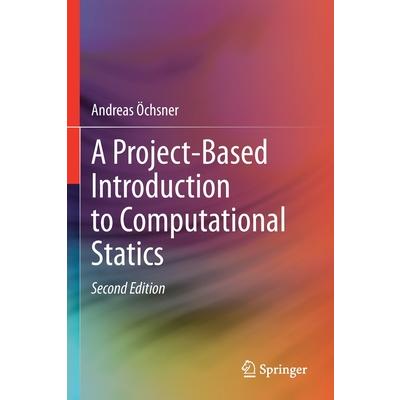


![Report on the Utilization of Peat Fuel for the Production of Power [microform] Report on the Utilization of Peat Fuel for the Production of Power [microform]](https://cdn.kingstone.com.tw/english/images/product/8685/9781014728685m.jpg)
![The Mechanics’ Lien Acts of Ontario (R.S.O. (1897); Cap. 153), Manitoba (60 Victoria, Man., Cap. 29), and British Columbia (R.S., Cap. 132) [microform] The Mechanics’ Lien Acts of Ontario (R.S.O. (1897); Cap. 153), Manitoba (60 Victoria, Man., Cap. 29), and British Columbia (R.S., Cap. 132) [microform]](https://cdn.kingstone.com.tw/english/images/product/6082/9781014776082.jpg)
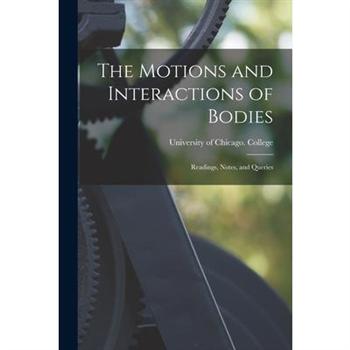

![The Mechanics’ Lien Acts of Ontario (R.S.O. (1897); Cap. 153), Manitoba (60 Victoria, Man., Cap. 29), and British Columbia (R.S., Cap. 132) [microform] The Mechanics’ Lien Acts of Ontario (R.S.O. (1897); Cap. 153), Manitoba (60 Victoria, Man., Cap. 29), and British Columbia (R.S., Cap. 132) [microform]](https://cdn.kingstone.com.tw/english/images/product/8690/9781013688690m.jpg)



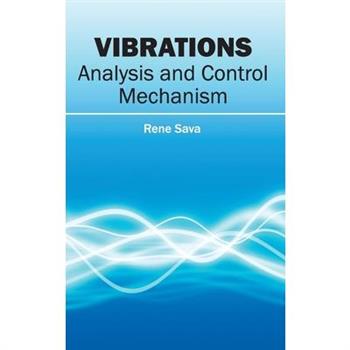
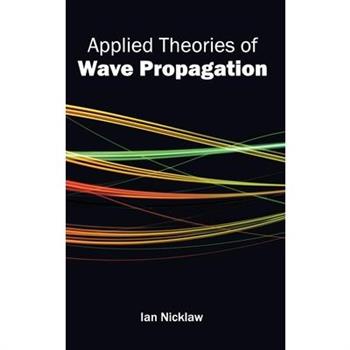
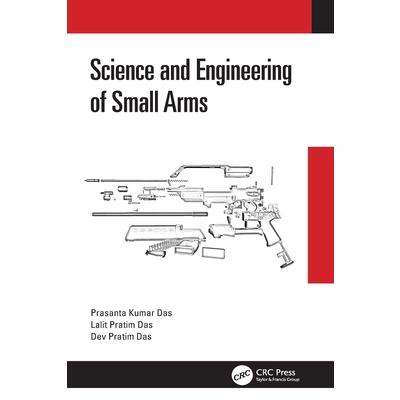
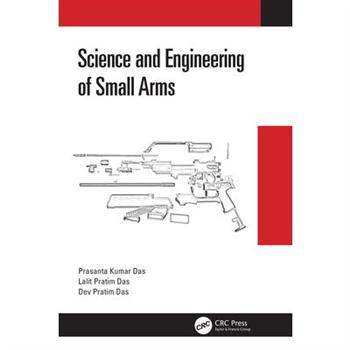
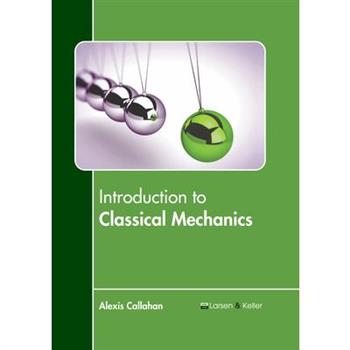
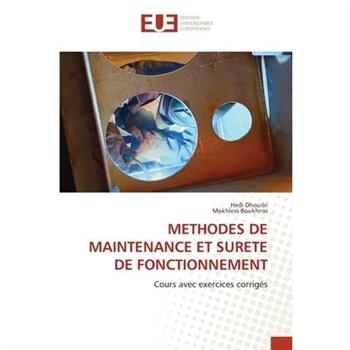

![Supplement to High School Physical Science [microform] Supplement to High School Physical Science [microform]](https://cdn.kingstone.com.tw/english/images/product/2351/9781013602351.jpg)
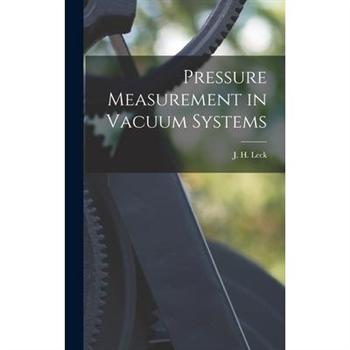

![Syllabus of Elementary Mechanics [microform] Syllabus of Elementary Mechanics [microform]](https://cdn.kingstone.com.tw/english/images/product/5928/9781014735928m.jpg)

